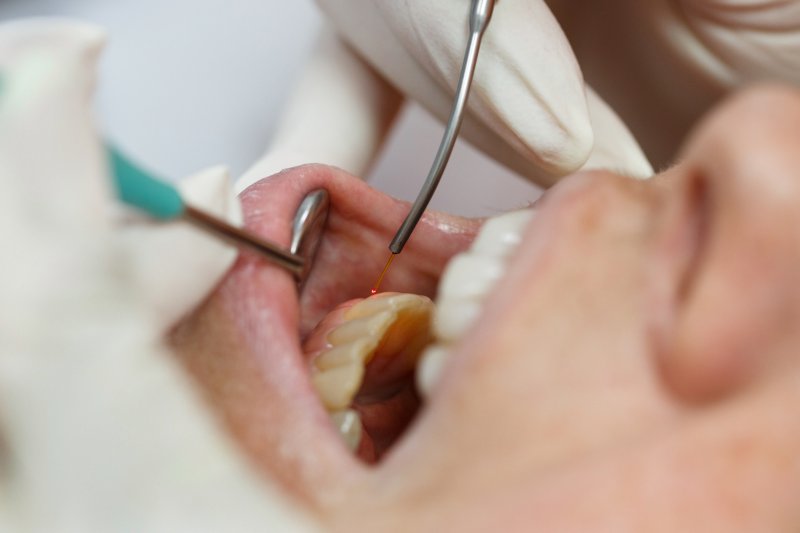
In the past, the only way to address certain dental issues, like overgrown gum tissue, was with the use of a scalpel. These treatments were effective, but patients would have to endure additional discomfort and longer healing times. Fortunately, dentistry has come a long way in the past few decades. Today, we have soft-tissue lasers to help make a variety of procedures quicker, more comfortable, more precise, and safer. Continue reading to learn more about soft-tissue lasers, how they work, and different dental procedures that they can be used for.
What Is a Soft-Tissue Laser?
A soft-tissue laser uses a small, highly concentrated beam of light to perform a wide range of functions. In addition to being able to remove soft tissue, they can also be used to reduce bleeding and swelling, seal blood vessels, and seal nerve endings. Soft-tissue lasers give your dentist the ability to have additional control during dental treatments. Troublesome areas in the mouth can be targeted accurately and precisely, so treatment can be completed more quickly. Because laser dentistry is less invasive than traditional methods, swelling, bleeding, and discomfort are greatly reduced. This means a shorter healing and recovery period.
What Are Soft-Tissue Lasers Utilized For?
Soft-tissue lasers can be used for numerous different dental treatments. Here are some of the most common ways that they are used:
- Periodontal Treatment: Soft-tissue lasers can be used to remove infected gum tissue. This is more precise than traditional surgery, reducing discomfort and bleeding.
- Oral Surgery: When using a soft-tissue laser in the place of a scalpel, dentists can be much more precise.
- Treating Ulcers: If you’ve had canker sores before, you know how uncomfortable they can be. Instead of just using topical treatments, dentists can use soft-tissue lasers to promote quick healing.
- Gum Recontouring: Soft-tissue lasers aren’t just limited to restorative procedures. They can also be used for cosmetic purposes. Some patients are unhappy with the appearance of their teeth due to having a “gummy smile.” To correct this, a soft-tissue laser is used to remove unneeded gum tissue and reshape the gumline for a more proportionate appearance. Since the soft-tissue laser cauterizes the area as it goes, there is no need for sutures.
As the years go by, there are more and more developments in the dental field. Laser dentistry can help with a wide range of issues, minimizing risks. To learn if laser dentistry is right for you, contact your dentist to discuss your options.
About the Author
Dr. James Kirby earned his dental doctorate from the University of Tennessee in Memphis. He has been practicing dentistry for well over a decade and enjoys all aspects of dentistry – especially cosmetic dentistry and dental implant restoration. To learn more about soft-tissue lasers or to schedule an appointment at his office in Green Hills, visit his website or call (615) 327-2123.

